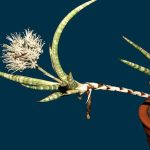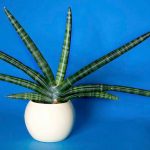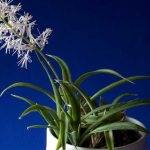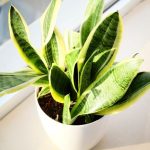Explore the fascinating world of Sansevieria Kirkii, commonly known as star sansevieria, a unique plant variety that thrives with minimal care.
Star sansevieria, also recognized as Sansevieria kirkii, is a type of snake plant that offers a distinctive touch to any indoor or outdoor setting. This plant can be a delightful addition to your living space if you appreciate its charm and versatility.
For enthusiasts of this particular species, obtaining and tending to a star sansevieria can be a rewarding experience, bringing joy and beauty to your surroundings.
Essential Products for Care:
- Espoma Organic Cactus Mix
- Espoma Organic Cactus Plant Food
Quick Care Guidelines
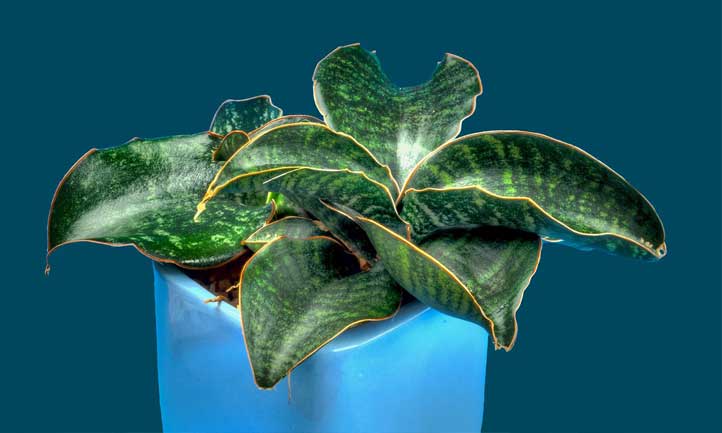
| Common Name | Star Sansevieria, Pangane Sansevieria, Sansevieria kirkii cv. Silver Blue hemp |
| Scientific Name | Sansevieria kirkii cv ‘Baker’ |
| Family | Asparagaceae |
| Height & Spread | Slow growing with an ultimate height of 3.2ft |
| Light | Moderately bright to filtered light |
| Soil | Well-draining soil |
| Water | Water deeply until drainage occurs |
| Pests & Diseases | Watch out for root rot |
Discover Sansevieria Kirkii
Originating from East Africa, particularly Tanzania, this snake plant variety displays erect, robust, lance-shaped leaves with unique brown and yellow borders and pointed tips.
During its flowering phase, star sansevieria produces conical inflorescences bearing clusters of fragrant, greenish-white blooms along the leaf margins. While now classified under the genus Dracaena by some, many enthusiasts still regard it as a Sansevieria.
Among its variants, Sansevieria kirkii silver blue stands out with its stunning thick leaves exhibiting intricate dark streaks on a silver blue backdrop. This acaulescent plant lacks visible stems above the soil surface.
Another sought-after variety, Sansevieria kirkii ‘Friends,’ features densely clustered leaves for a bushier appearance, accompanied by greenish-white flowers.
Caring for Sansevieria Kirkii
Sansevieria kirkii is a low-maintenance, slow-growing plant that thrives in diverse environmental conditions. It may take several years to mature and produce offsets – identical offshoots that sprout from the main plant, which can be used for propagation.
Light & Temperature
Optimal growth for this succulent occurs in moderate to slightly filtered sunlight. Indirect bright light accentuates leaf coloration, but prolonged exposure to direct sunlight may cause leaf damage and yellowing. While tolerant to shade, ample bright light is recommended for robust growth.
Keep your Sansevieria kirkii in a temperature range of 59°F to 73°F for optimal development. Although it can tolerate temperatures as low as 50°F, prolonged exposure to such cold conditions is not advisable for this plant.
Avoid subjecting your Sansevieria kirkii to temperatures below 50°F, as it is susceptible to damage in cold environments. Overexposure to intense light can lead to burnt leaf tips; hence, it is crucial to maintain balanced lighting.
Water & Humidity
Allow the soil to completely dry between waterings, as star sansevieria is highly resistant to drought. Water the plant generously, waiting for drainage to occur before ceasing. Prevent standing water and empty the saucer of any excess moisture.
Reduce watering frequency during fall and winter, when the plant exhibits slower growth patterns.
Soil
Opt for a well-draining cactus mix to promote healthy growth. Soggy soil can lead to root rot, so aeration is crucial. You can create a suitable soil mix by blending perlite, compost, and sand in equal parts (1:1:1).
Fertilizer
Star sansevieria is a low-maintenance plant that does not demand frequent fertilization. Over-fertilization can harm the leaves, so opt for a mild, diluted application of general-purpose fertilizer every month or every three weeks during summer when the plant is in bloom and requires extra nourishment.
Repotting
When repotting your snake plant, ensure that it is dry before transferring it to a new container. Select a well-draining planter with adequate drainage holes and layer the base with free-draining soil. Position the plant, fill the remaining space with soil, and water appropriately.
Maintain loose soil consistency and refrain from overwatering. It is advisable to repot the plant only when the roots have fully occupied the current container, as Sansevieria kirkii prefers a slightly root-bound environment!
Propagation
To propagate your snake plant rapidly, opt for division over the challenging method of seed propagation from the greenish-white blossoms.
When the plant outgrows its current pot, take the opportunity during repotting to separate and propagate new plants. Monitor the plant for growth signals thoroughly to ensure successful propagation.
Propagation
When propagating your Sansevieria kirkii, always be on the lookout for any root or stem offsets. If you happen to spot any, gently separate them from the parent plant and plant both the offset and the original plant in separate pots for optimal growth.
Pruning
To keep your mature plant looking fresh and vibrant, employ a sharp knife to trim its longest leaves, typically found on the outer edges, at the soil line. Additionally, you can utilize these trimmed leaves for leaf cuttings to propagate new Sansevieria plants.
Troubleshooting
Growing Problems
The primary issue that may arise with S. kirkii is overwatering, leading to root rot and potential plant demise. To prevent this, ensure proper soil drainage to avoid this common concern in houseplant care.
Moreover, it is advisable to place your Sansevieria kirkii away from direct intense light to prevent leaf discoloration. Opt for a location in front of a lightly curtained window to provide bright indirect sunlight for optimal growth.
Pests
Sansevieria kirkii plants are generally robust and resistant to pests, thanks to their thick leaves and sturdy base.
Diseases
Aside from root rot caused by overwatering, there are limited disease concerns for your silver blue snake plant. If signs of rot emerge, adjust your watering frequency. If issues persist, consider repotting your S. kirkii in fresh soil and monitor its health closely.
Frequently Asked Questions
Q: Is Sansevieria kirkii toxic?
A: Yes, this plant can be toxic if ingested, so it’s essential to keep it out of reach of children and pets.
Q: How should I care for a Kirkii Sansevieria?
A: Maintaining S. kirkii involves providing well-draining soil, infrequent watering as it is drought-tolerant, and exposure to bright indirect light. Avoid excessive sunlight to prevent leaf tips from browning.
Q: Why is my Sansevieria toppling over?
A: Overwatering can cause your S. kirkii to topple. If this occurs, remove affected leaves, and inspect the plant for signs of root rot.
Q: How often should I mist my Sansevieria?
A: While misting isn’t essential, some enthusiasts prefer misting their S. kirkii with tepid distilled water to counteract the tendency to overwater. A light misting daily can be beneficial for the plant.

